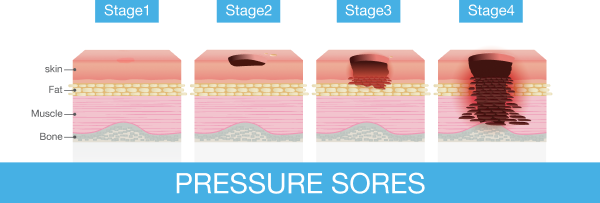Bedsores in Nursing Homes
A Tampa attorney can help your loved one get justice
Bedsores – also called pressure sores – are a common problem among nursing home residents. They are painful injuries that can become infected, leading to further health problems. When bedsores are the result of nursing home abuse and neglect, it’s important to hold negligent nursing home facilities accountable.
At Armando Personal Injury Law, we understand the devastating impact bedsores can have on nursing home residents and the emotional and financial toll that can take on family members. Attorney Armando Edmiston is dedicated to building strong cases that help residents and family members recover the financial compensation they deserve.
How bedsores develop in nursing homes
Bedsores are injuries that develop on an area of the skin after prolonged pressure, usually from remaining in the same position for long periods of time – for example, lying in bed or sitting in a wheelchair. The pressure restricts blood supply to the area and skin tissue begins to break down.
Bedsores are more likely to occur on areas of the body where there is not a lot of muscle or fat underneath the skin, such as the tailbone, hips, heels, shoulder blades, backs and sides of the knees, toes, and small of the back.
Nursing home and assisted living residents are at a greater risk of developing bedsores if they have poor nutrition or hydration, certain health conditions such as diabetes or poor circulation, or are left in the same position for too long.
What are bedsore symptoms?
Symptoms of bedsores include skin that is red or swollen, wounds with thick pus and a foul smell, pain or tenderness, and fever. Bedsores develop in stages:
- Stage 1 – There is redness or discoloration and warmth in the affected area, which may also be warm to the touch. When the area is pressed with a finger, it does not blanch (turn briefly white).
- Stage 2 – The skin is broken, and there may be an open sore or blister, with discoloration around the affected area. The person may also have pain.
- Stage 3 – The wound has developed into a small crater and has cut through layers of skin, exposing fatty tissue.
- Stage 4 – The wound has become larger and deeper. There is extensive tissue damage and muscle, tendon, or bone may be exposed. There is also a higher risk of infection.

If your loved one has Stage 1 or Stage 2 bedsores, we recommend filing an official nursing home neglect complaint with the Florida Long-Term Care Ombudsman Program. If they have a Stage 3 or Stage 4 bedsore, or another serious complication, contact us immediately to discuss your legal recourse with an attorney.
A painful injury that can have serious complications if not treated
Bedsore treatment includes frequent repositioning to remove pressure, keeping wounds clean, and protecting wounds with gauze or other dressings. Other treatment may involve debridement (the removal of damaged tissue), negative pressure wound therapy, medication, and skin grafts to repair damaged skin.
If bedsores are not treated properly, there is a greater risk of complications such as osteomyelitis (infection in the bone), cellulitis (infection of the skin and soft tissue), and sepsis (infection in the blood).
Nursing homes need to prevent bedsores among residents
Nursing homes have a responsibility to regularly examine residents for signs of bedsores and take steps to help prevent them. These steps include regular repositioning, providing proper nutrition and hydration, and ensuring any illnesses or medical conditions are properly treated. When a resident does develop a bedsore, the nursing home must provide proper treatment.
If you think a loved one developed a bedsore as the result of nursing home neglect, talk to a supervisor or manager at the facility. If you don’t like how they respond to your concerns, talk to an experienced nursing home abuse and neglect lawyer.
We hold nursing homes accountable for preventable bedsores
At Armando Personal Injury Law, our first priority is making sure that your loved one is receiving all necessary treatment. Then we investigate to get the facts.
Nursing homes may try to hide evidence of negligence. Our legal team will take steps to gain access to medical records, hiring and supervision records, and other evidence. We also interview witnesses and if needed, consult experts who can help us understand whether your loved one received proper care.
Attorney Armando Edmiston knows how to build a strong case that nursing homes and their insurance companies have to take seriously. He will demand appropriate compensation for damages that may include all current and future medical expenses, pain and suffering, and emotional distress.
Call for a free consultation with a bedsore injury lawyer
You may not be sure if your loved one’s bedsores are related to nursing home neglect. That’s why it’s important to get legal advice as soon as possible. An experienced attorney can listen as you describe what happened to your loved one, go over your legal options for recovering financial compensation, and answer any questions you have.
There is no cost and no obligation. Contact us today to schedule a free case evaluation.
